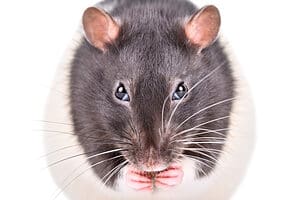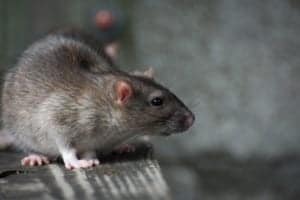Rats are social animals that need to be a part of a group to be happy and healthy. They form these groups quickly and easily, and they build and maintain social relationships. So, let’s find out what a group of rats is called and why the name is so fitting.
What is a Group of Rats Called?
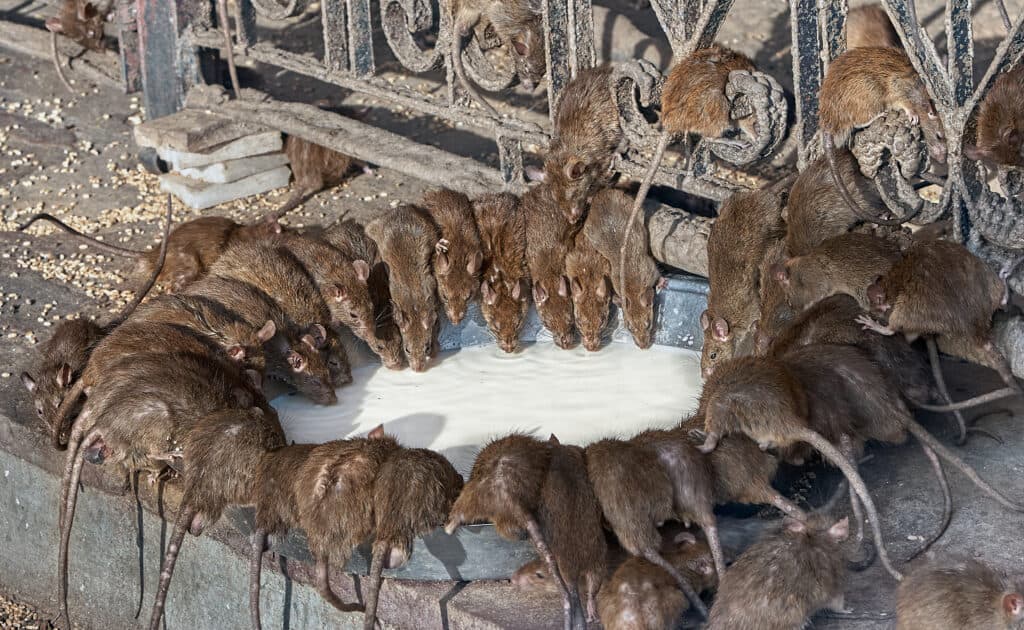
A group of rats is called a mischief.
©iStock.com/kulbabka
A group of rats is called a mischief. This name is fitting, as rats are known to cause mischief and trouble. Rats are also curious creatures and love exploring. Unfortunately, this curiosity and desire to explore often entails rats making a mess in the garbage or causing damage to homes. A rat infestation in a home is dangerous, as rats can chew on wires and cause electrical fires.
Rats Need to Be in a Mischief
Rats are social animals and often become depressed if they are alone. Consequently, a mischief of rats usually comprises one male rat, a few female rats, and their pups. However, a study found that when mischiefs include only male rats (or bucks), they have low mortality rates but are healthy. Although this is positive, it is not ideal as rats need to mate. Mischiefs with multiple bucks and female rats, known as does, result in high mortality rates in bucks and low mortality rates in does. This death rate among the bucks is due to them fighting for dominance. In contrast, mischiefs with only does result in no deaths at all, as the females are less aggressive than the males and do not necessarily feel competition among themselves.
Need for Socialization Shows That Rats Are Extremely Smart
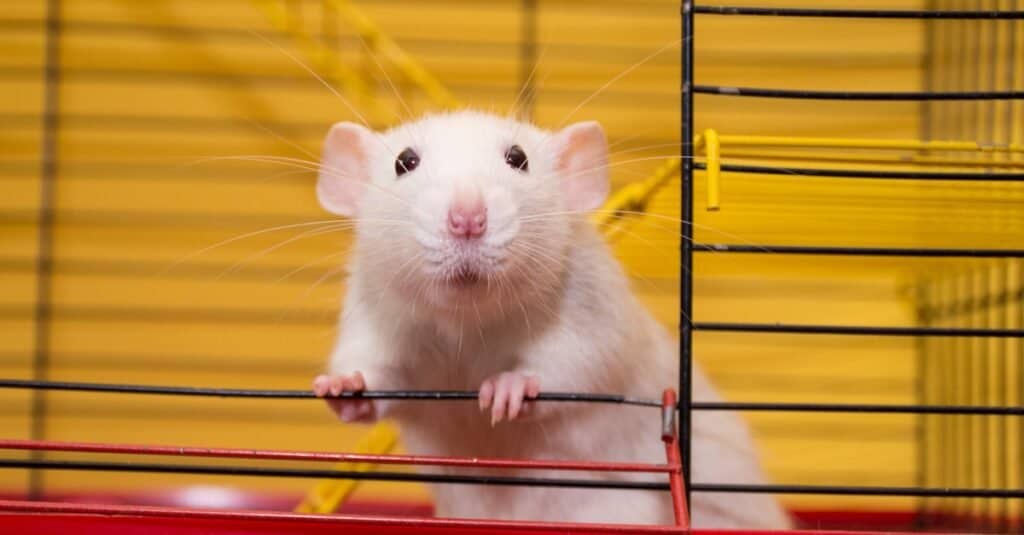
Rats show intelligence through their ability to be trained.
©Olena Kurashova/Shutterstock.com
Forming mischiefs and social relationships show that rats are intelligent mammals that make choices with intention. Other studies have shown that rat and human brains function similarly, and this shows through their actions and interactions. Rats have metacognition, which is making decisions after considering various factors and information regarding a situation. When living in a mischief, rats communicate with each other at frequencies outside people’s hearing range. Additionally, rats show sympathy within the mischief when one of their members is in pain or trouble. Also, these animals will leave their food and ignore their wants to try to help a fellow rat.
Rats also show intelligence through their ability to be trained. Pet rats, like others, can learn tricks like responding to their name, jumping through a hoop, and figuring out a maze. People also train these inquisitive rodents using treats and positive reinforcement, which they enjoy. Humans have also taught other rats to complete important tasks like saving the lives of those in trouble. For example, Gambian pouched rats in Cambodia are used to detect undetonated land mines. These rats, native to the Gambia in Africa, are also trained to locate these undetonated land mines and rewarded with treats when successful. As a result, a Gambian pouched rat named Magawa has found these mines and been awarded the PDSA Gold Medal. This award is a bravery award, and Magawa has been the first rat to receive this recognition.
The Name for a Group of Rats Is Fitting
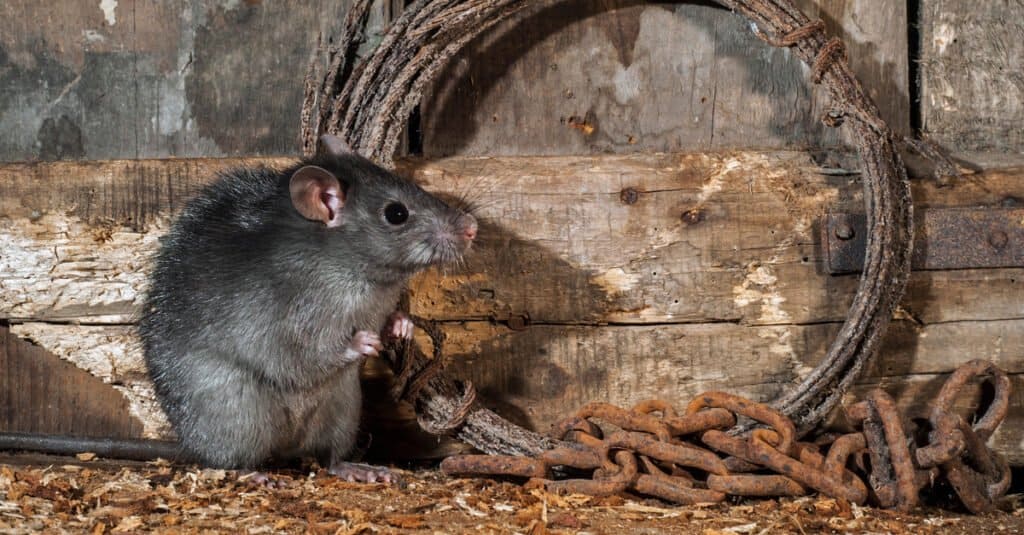
Rats, whether alone or in a mischief, are mischievous and troublemakers.
©Philippe Clement/Shutterstock.com
Rats, whether alone or in a mischief, are mischievous and troublemakers. So, when humans prevent rats from causing trouble, no matter if these rats are wild or domesticated, they experience stress. But, if rats enter your home or building, they can cause damage as they build their nests in or under homes and damage property. Rats chew and gnaw at wood, steel, and even wires which can cause a fire. These rodents also strip homes of materials to make nests. This behavior includes stripping insulation, furniture material, and even wallpaper for nest construction.
Rats are also known to cause trouble outside of homes and buildings. They often live around trash heaps looking for shelter, but mainly for food. Additionally, these animals have noses sensitive to intense aromas, so trash heaps are appealing because they promise a food source. Rats also have the potential to disrupt and destroy gardens. Many people take pride in cultivating their gardens, and rats could ruin this if you grow plants or crops that rats like eating. But, there are ways to rat-proof your home and garden.
Ways to Rat Proof Your Home
Because rats’ olfactory senses are sensitive, there are plants and other household products that you can use to discourage them. For example, when rat-proofing your home or building, you could create various mixtures to spray in areas to chase away rats. To make infusions, you could develop blends by mixing essential oils or adding plants to water.
Examples of these essential oils and plants are:
- Clover flowers
- Pepper, chili, and hot sauce
- Garlic
- Onions
- Peppermint oil
- Wintergreen oil
- Spearmint oil
- Cloves
- Eucalyptus
- Citronella oil
You can also place clover flowers, pepper, chili flakes, garlic cloves, onions, and cloves in and around your home to discourage rat activity and presence. When spraying these mixtures or placing the items in and around your home, you must do so strategically. Rats can find the smallest hole or opening to enter your home. Therefore, you should place deterrents at all possible entrances to effectively keep rats at bay. In addition, you should know what species of rat you are dealing with. For example, Norway rats climb into roofs, and ship rats burrow in the ground or under porches. The species of the rat will indicate the ideal locations to place deterrents.
When rat-proofing your garden, consider cultivating plants that have strong and pungent smells.
Examples of these plants are:
- Marigolds
- Garlic
- Rosemary
- Black pepper
- Onions
- Daffodils
- Black pepper
The photo featured at the top of this post is © iStock.com/Bilanol
Thank you for reading! Have some feedback for us? Contact the AZ Animals editorial team.



